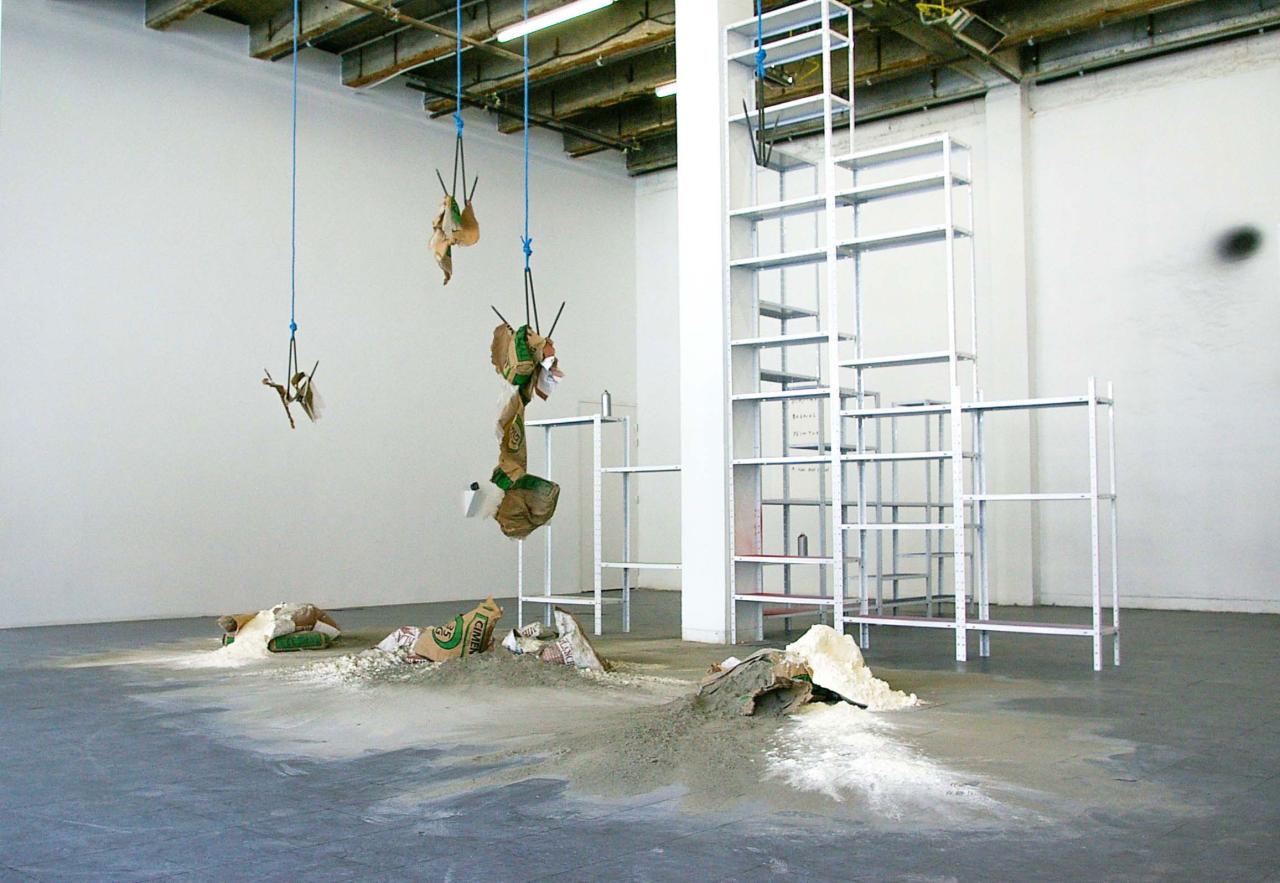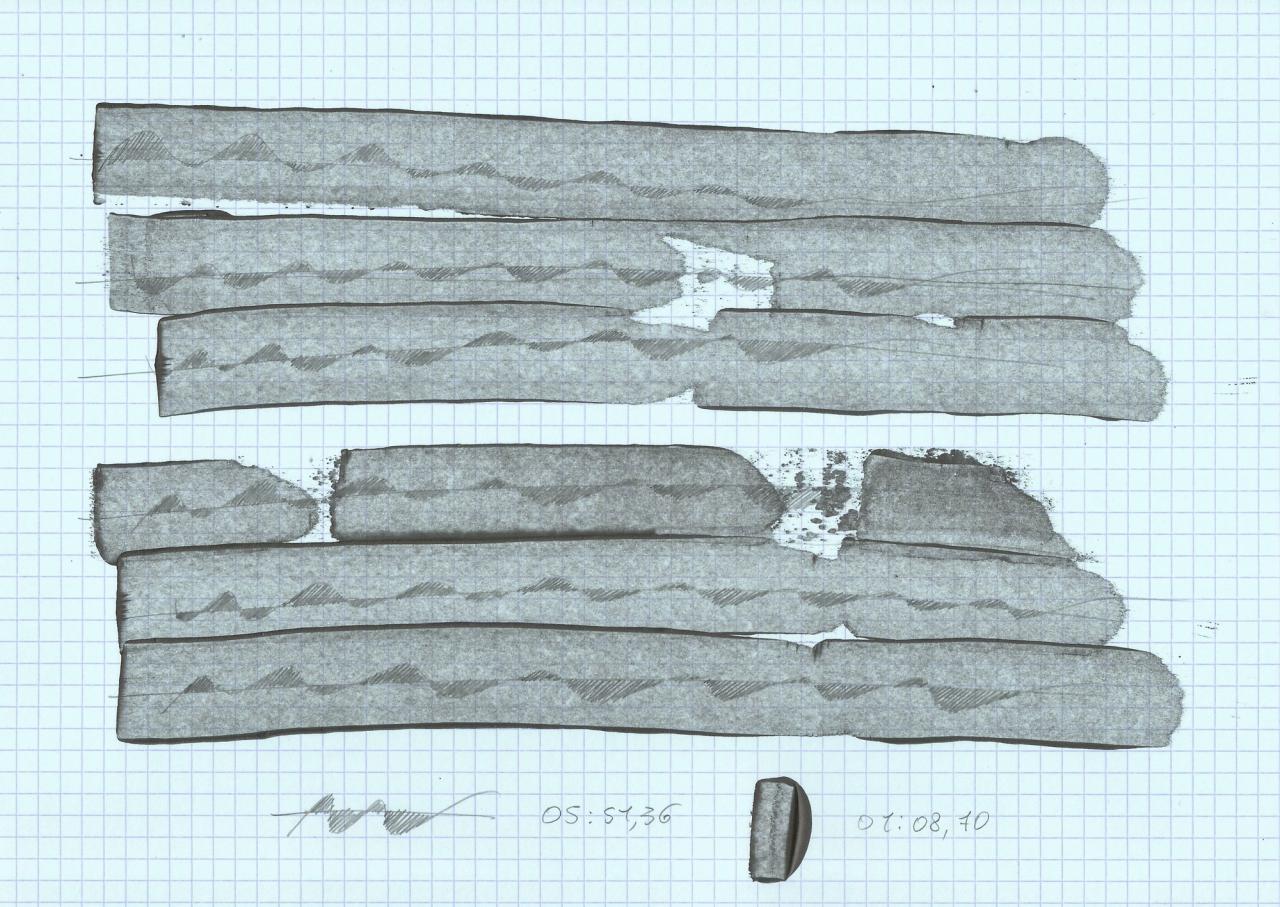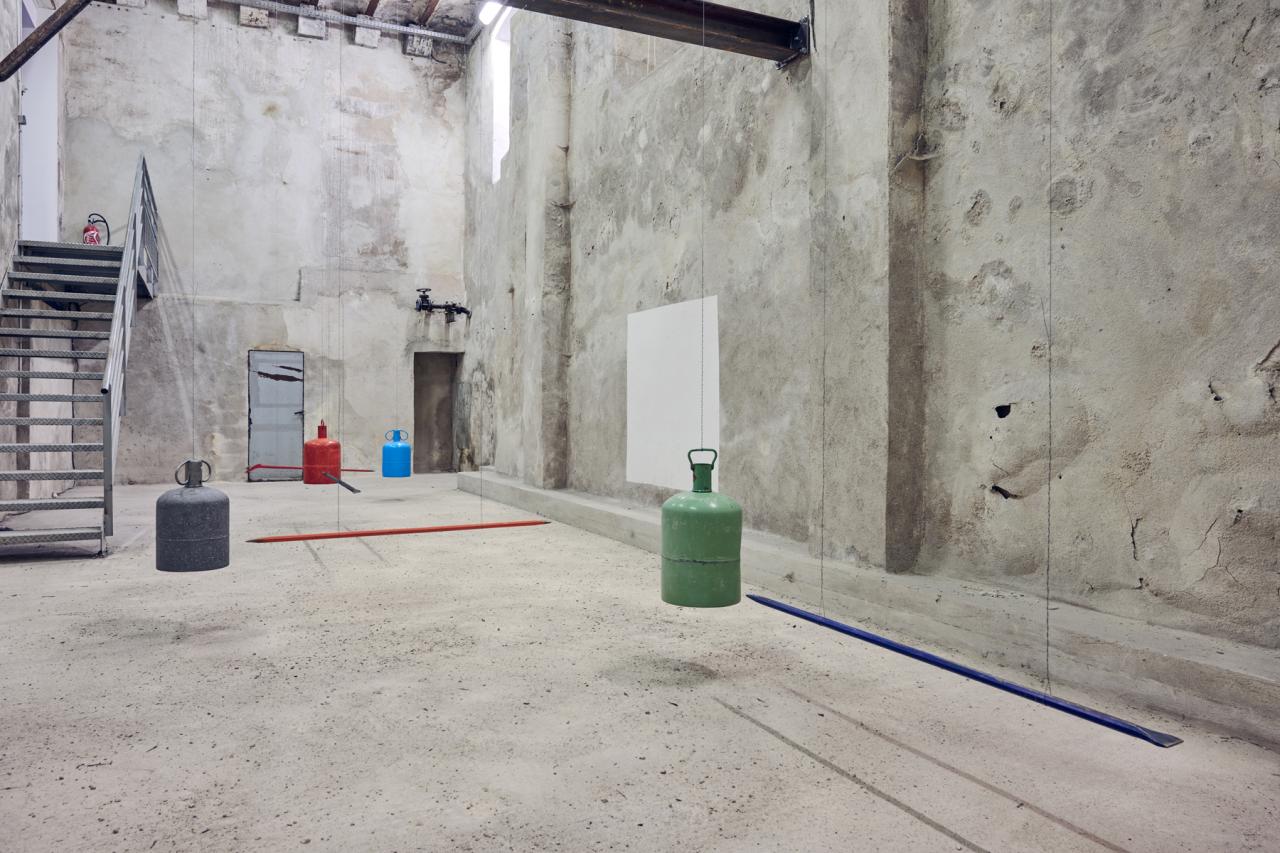Hervé Bréhier
Born in 1968
Lives and works in Clermont-Ferrand



« Hervé Bréhier’s sculptures are the result of a combination of two “repertoires”: a repertoire of materials generally used in the architecture and interior design of housing or workspaces (plywood panels, wooden doors, copper pipes, concrete, levelling plaster…) and a repertoire of actions (tracing, cutting, splitting, coating, rolling, propping up…), the simplicity of which is somewhat reminiscent of American sculptor Richard Serra’s Verb List in the late 1960s. Hervé Bréhier’s videos follow the same logic, which consists in opening and closing the shutters of an industrial building one by one; in single-handedly filming the corner of a wall or ceiling for a given time… It is the artist’s physical ability to take on the transformations and displacements he puts these materials and objects through that contributes to determining the scale of his sculptures, which are always closely linked to the scale of the human body. […]
Temporality is also an important dimension in Hervé Bréhier’s work, and is expressed through his rather unusual use of readymade elements: crates, pieces of furniture, or wooden doors… […] These objects – in that they are objects to start with – become mediums for the artist’s interventions and materials for some of his sculptures. Their original function and antique nature are never concealed and are even highlighted to become meaningful motifs. Because they are so easily recognisable, they create a sort of proximity with the public by sharing the space with them and stimulating tactile sensations and an instinct to touch. I have mentioned before that these were readymade elements. However, it is important to specify that they are never actually used as such: they are always missing a part – here the lid of a crate, there the shelves of a bookshelf, and in another instance the frame of a door with only its central panels left.
These subtractions that the artist operates follow the same logic that leads him to strike objects with lines, cut them with a saw, split them with a blade or an axe, place them at a balance, or puncture a hanging bag of cement or flour to let its contents spill out onto the floor… All these actions demonstrate Hervé Bréhier’s will to create tension and reveal a contained, suppressed violence, which is also one of the characteristics of his work.
One might also add that these actions stem from a prerogative that could be qualified, for lack of a better word, as “minimalistic”: the artist’s interventions always bear a certain silent quality and involve him taking a step back. However, the fact that he uses all these “gestures” does not mean that his work must be categorised as performance art, or that it is intended to produce a “pathetic” effect. Instead, the artist acts as an operator: his gestures are not meant to be “expressive” – they are “emotionless” and originate in building, woodworking, and plumbing.
What I described as “minimalistic” pertains less to an aesthetic intention than to a will to produce, through the simple gesture of cutting or plastering a “slice”, a “reference plane” in which not only the silent history of the materials and objects used can be read, but also the full extent of the sculptural value of these works.” […]
Excerpt from Plans de référence, by Cédric Loire
Semaine No. 362, Analogues, Arles, 2014
Translated by Lucy Pons, 2019
© Adagp, Paris